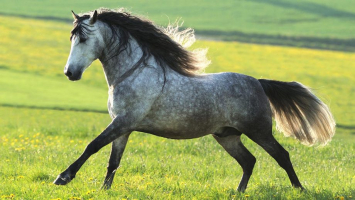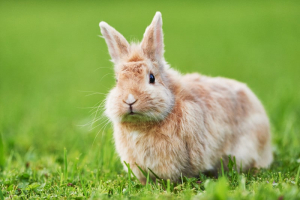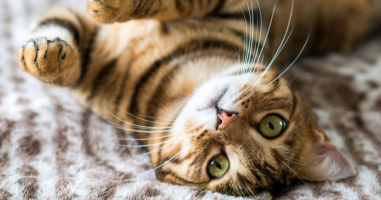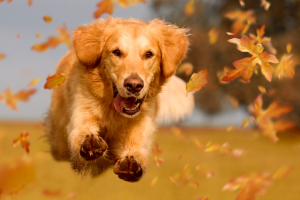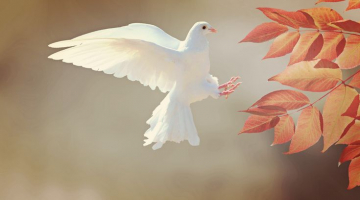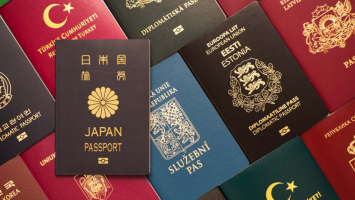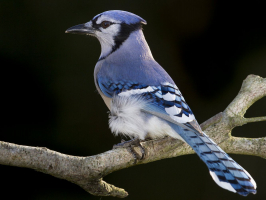Top 10 Friendliest Cat Breeds In The World
Cats are animals that are very close to humans. Each breed of cat has its own beauty and personality, and owners need to know it well to be able to take care ... read more...of them in the best way. Some cat breeds are impressed by their easy-going, friendly personalities. Let's find out with Toplist about the friendliest cat breeds in the world!
-
The first position on the list of the friendliest cat breeds in the world is the Main Coon. A sizable domestic cat breed is called the Maine Coon. One of the first native breeds to exist in North America. The breed was developed in Maine, the official state cat of the United States.
The breed enjoyed popularity at cat competitions in the late 19th century, but when long-haired varieties from other countries were introduced in the early 20th century, its survival was put in jeopardy. Since then, the Maine Coon has made a resurgence and has risen to become the third most popular pedigreed cat breed globally.
It's possible that the Maine Coon's nickname as "the gentle giant" stems from its size and sociable nature. The Maine Coon is primarily recognized for its size and a thick coat of fur, which enable the big cat to live in the severe climate of Maine, where they were first discovered. The Maine Coon is frequently referred to as having "dog-like" traits. They are the most amiable cats and excellent with children. They are not combative and are constantly curious about new people and locations. They are not suitable as a pet for a casual pet owner. They'll be exceedingly demanding of your time and hate it when you ignore them.
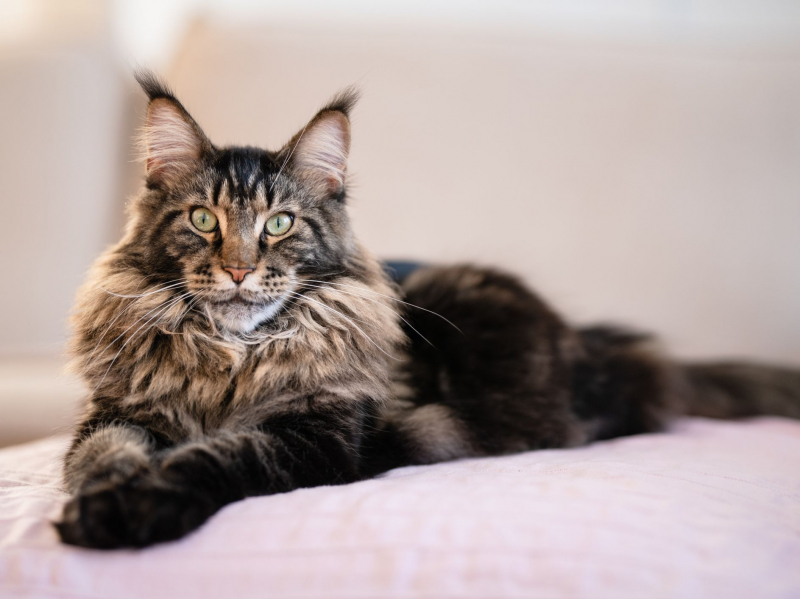
Photo: thesprucepets.com 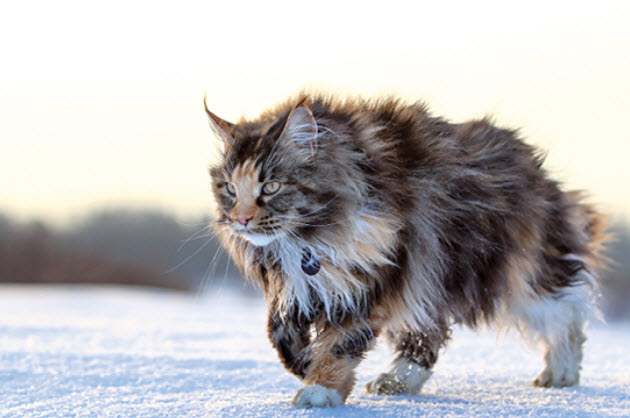
Photo: longkhanhpets.com -
It is a type of domestic short-haired cat that stands out for having a striped, multicolored coat with spikes. It was originally believed that this cat originated in Abyssinia (now Ethiopia), but more recent research has shown that they actually came from somewhere close to the coast of Egypt. One of the most well-liked short-haired cat breeds in America today is the Abyssinian.
The Abyssinian is a well-boned breed that is medium in stature. The skull is essentially wedge-shaped, and the broken lines at the muzzle, nose, and chin give it a distinctive curve. They possess large, sensitive ears. The almond-shaped eyes may be yellow, blue, pistachio, or bronze, depending on the hue of their coat. Long, tapering tail, small oval feet, and long legs that balance the torso.
Abyssinians are a well-liked breed due to their extraordinary intelligence and often social, lively, and obstinate attitude. They purportedly develop gloom if they are not constantly entertained and given their masters' attention. Because of their curiosity and desire to play with their owners, Abyssinians are known as the "Clowns of the Cat Kingdom." They have an energetic, gregarious nature while having the appearance of being placid cats. Instead of the conventional "meow," they produce delicate vocalizations that sound like chirrups. They are kind and friendly to others.
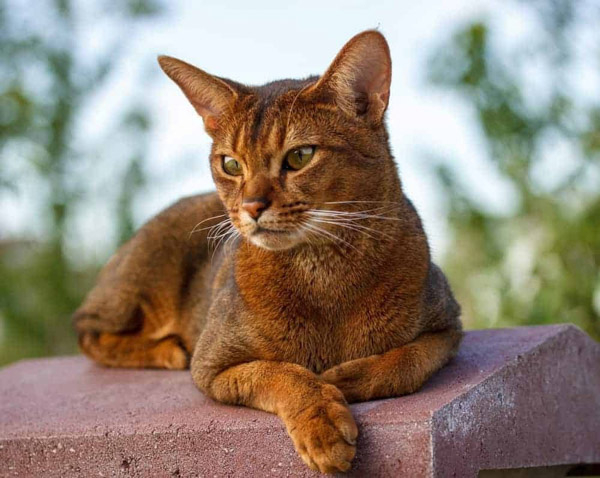
Photo: soc-pet.com 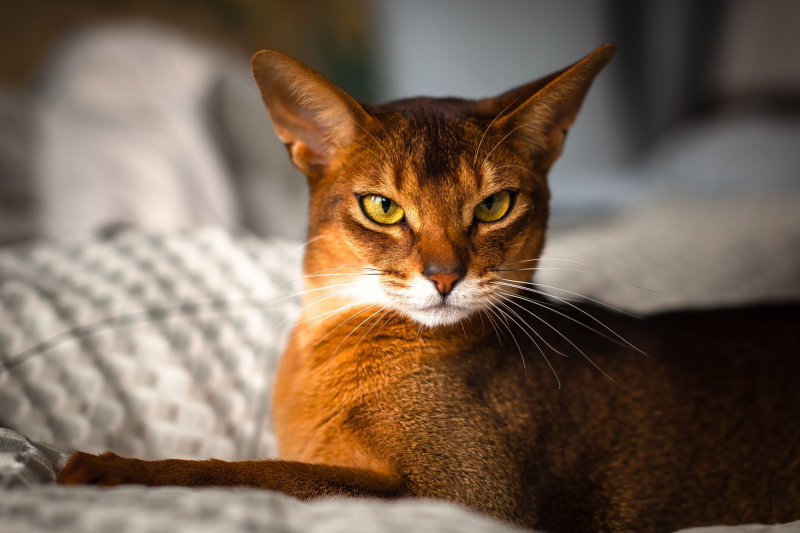
Photo: thesprucepets.com -
A domestic cat breed known as the Scottish Fold has a naturally occurring dominant gene mutation that affects cartilage throughout the body and causes the ears to "fold," bending forward and downward toward the front of the head, giving the cat what is frequently referred to as an "owl-like" appearance.
Scottish Folds, whether they have folded ears or normal ears, are normally calm and good-natured and get along well with other pets in a family. Being highly affectionate by nature, they have a tendency to develop strong attachments to the people who care for them. Additionally, Folds gets top grades for intelligence, grooming, and playfulness. Scottish Folds appreciate being outside and participating in outdoor sports and activities. They strongly dislike being alone. Scottish Folds frequently exhibit stubbornness.
Folds are renowned for dozing on their backs as well. The voices of Scottish Fold cats are typically gentle, and they have a diverse range of meows and purrs that are uncommon in more well-known breeds. Folds are renowned for sitting with their paws on their bellies and their legs spread out. The "Buddha Position" is the name given to this posture. It is one of the friendliest cat breeds in the world.
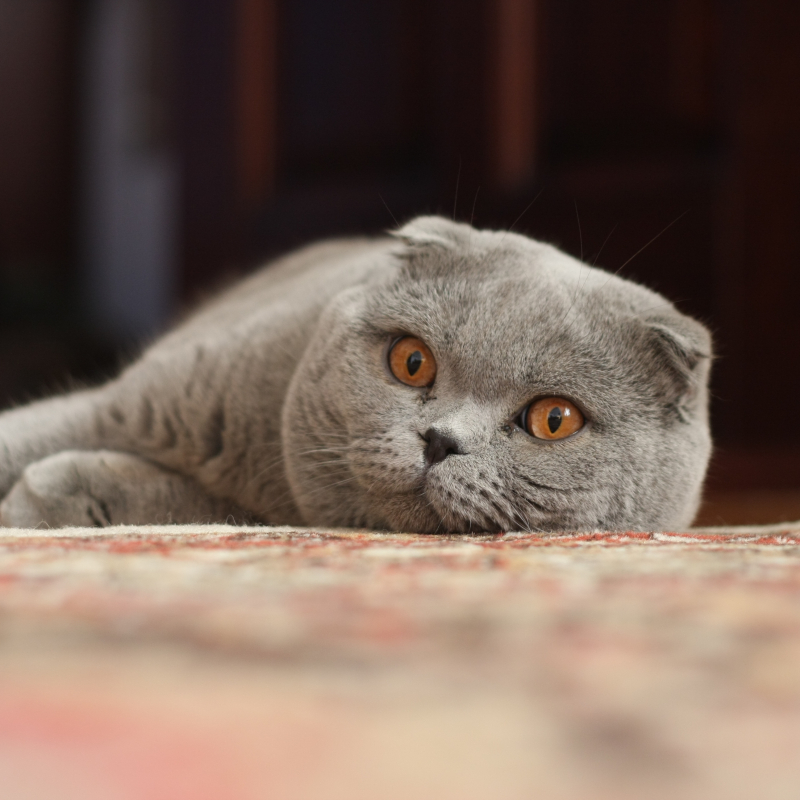
Photo: wikipedia.org 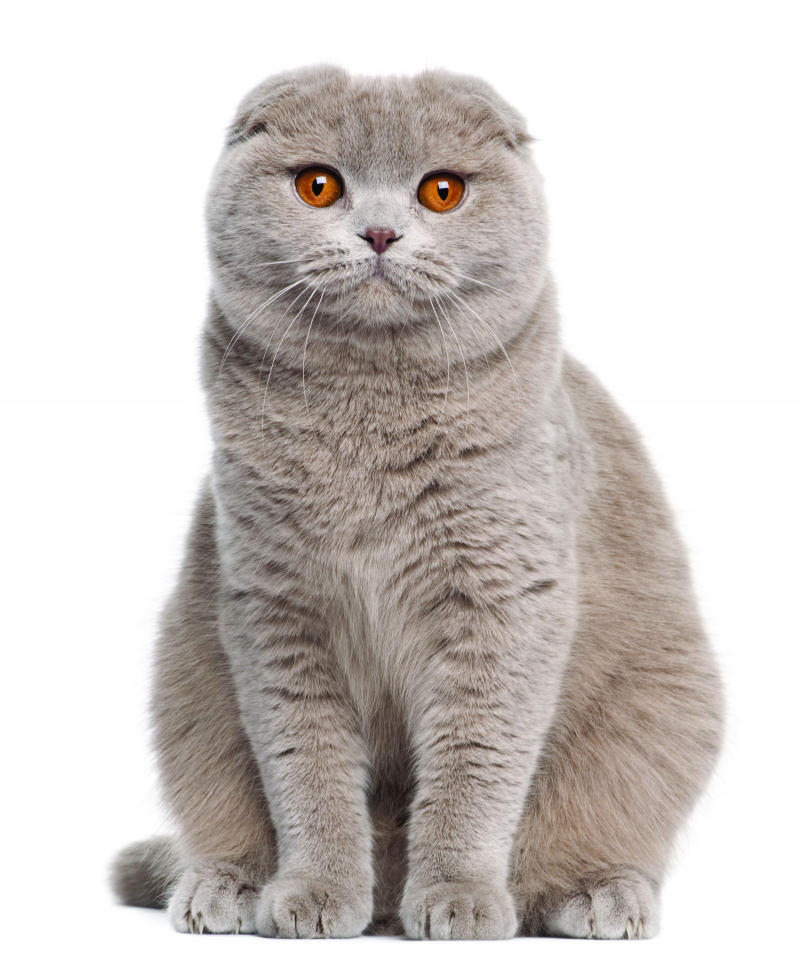
Photo: tthme.com -
As a short-haired variant of the Persian cat, the Exotic Shorthair was developed. The Exotic and Persian are similar in many ways, including temperament and conformation, a flat nose, and a face, with the exception of the short, dense coat. The large, round eyes, which are widely spaced within the broad, spherical cranium, have an impact on the appearance and expression. The cat's thick, silky coat emphasizes its roundness and softened contours. The Exotic can maintain its own fur with little help from humans, unlike the high-maintenance Persian, though weekly brushing and combing is advised to eliminate loose hair and lessen shedding and hairballs.
Exotic Shorthairs are typically livelier than their longhaired forebears, yet they have the delicate, placid demeanor of the Persian. They are curious and lively and get along well with other pets like dogs and cats, but they dislike being left alone and want their owner's constant attention. They make wonderful lap cats and have a tendency to be more loving and loyal than most breeds. They make excellent apartment cats for city residents because of their steady, tranquil demeanor. Exotics, though, still have a little of the American Shorthair's energy, and they frequently make good mouse hunters.
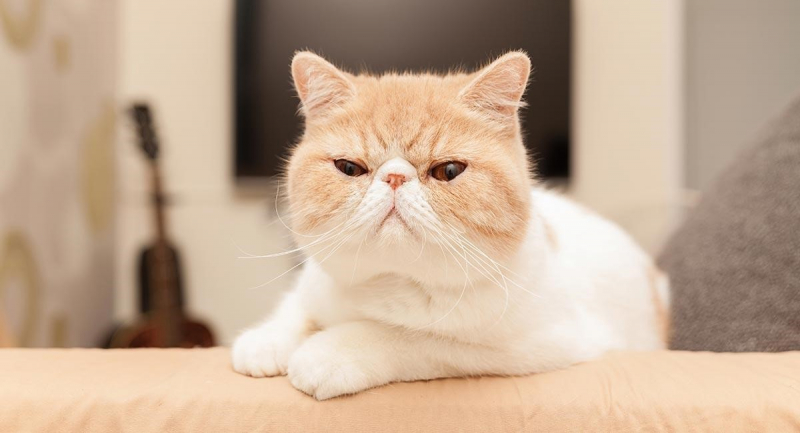
Photo: sieupet.com 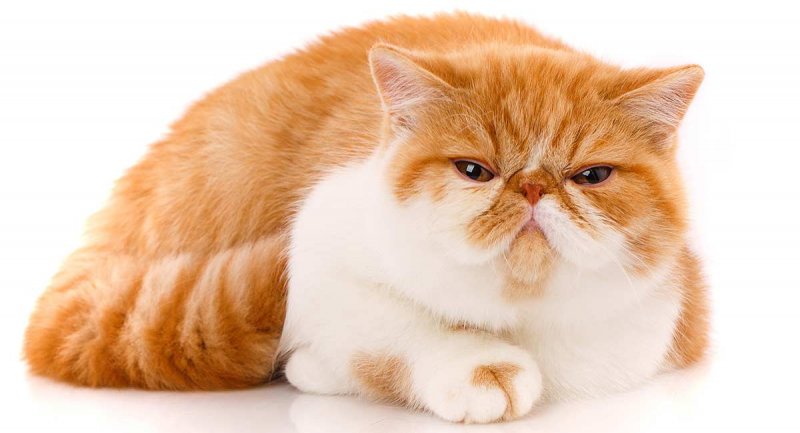
Photo: tthme.com -
The Birman is a domestic cat breed also known as the "Sacred Cat of Burma." A long-haired, color-pointed cat called a Birman can be identified by its silky coat, intensely blue eyes, and striking white "gloves" on each paw.
Birmans have a broad face, a medium-sized, rectangular torso, with a pronounced Roman nose. Their ears should be placed as much on top of the head as on the side, with a base that is as wide as their height. The rounded eyes should be a beautiful sapphire blue in color. The medium-length fur of the Birman should be smooth in texture. They are far less prone to matting because they don't have an undercoat like a Persian or Himalayan. Except for the distinctive pure white, symmetrical "gloves" on each paw that serve as the breed's characteristic, the coat is always pointed. The white must cover all of the toes and stop in front at the articulation or where the toes transition into the metacarpals.
The friendliest quality of the Birman breed is well known. They are frequently described as the "grand dame" of the cat world and adore showing affection. They are distinguished by their long, silky hair, and their faces are frequently coated with white fur. The domestic cat breed known as the Birman has white "gloves," "socks," and a white tail tip in addition to its light creamy-grey coat. They were created in Burma and have long been favored companions.
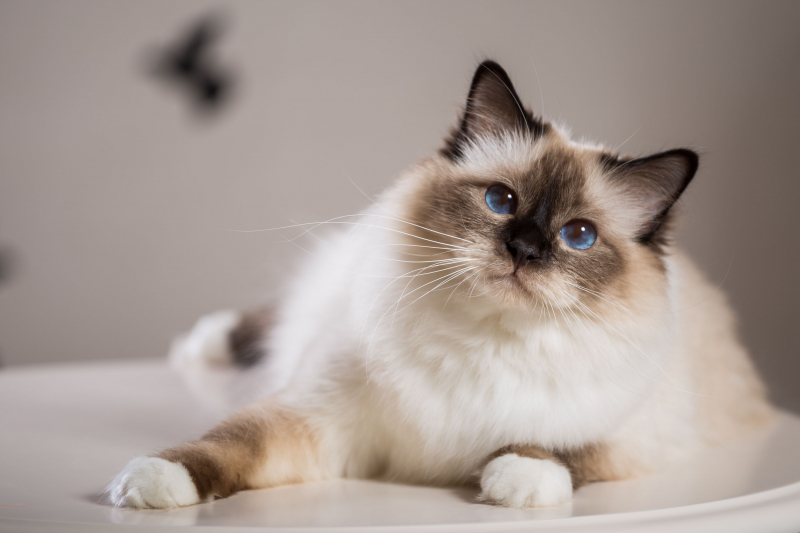
Photo: thesprucepets.com 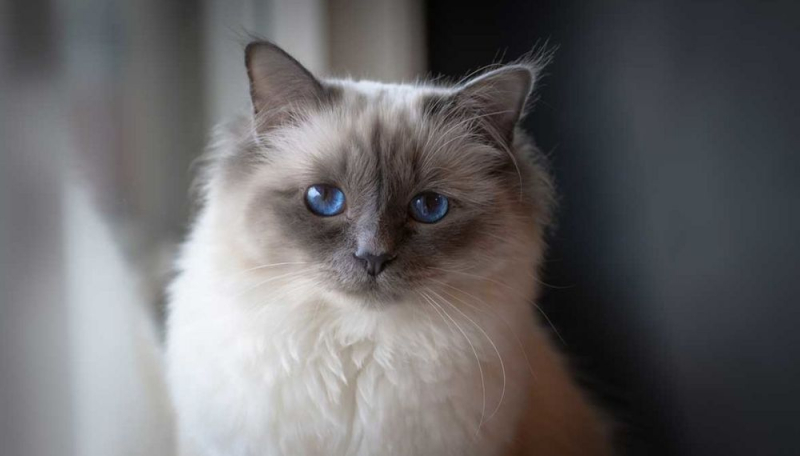
Photo: kidadl.com -
A long-haired cat breed called a Persian cat is distinguished by its round face and short muzzle. In English-speaking nations, it is additionally referred to as the "Persian Longhair." Around 1620, Persian cats were brought from Persia to Italy for the first time. Persian cats, which have been well-known to cat enthusiasts since the late 19th century, were first bred by Americans after World War II before being accepted by the English. The Himalayan and Exotic Shorthair are considered variations of this breed by certain cat fancier organizations, but they are classified as different breeds by others.
The Persian raises his charming, sympathetic face to look at his loving people like a pansy turns its face to the sun. He speaks with a lovely, quiet voice and a thoughtful look. The easygoing and undemanding nature of the Persian cat makes it the ideal lap cat. He loves to cuddle, but he's also vivacious and curious. Instead of jumping or climbing, he loves to strike an exquisite pose on a chair or sofa or to play with a favorite feather toy. Persians prefer a steady, predictable environment, but if their needs are understood and met, they can put up with a loud, obnoxious family.
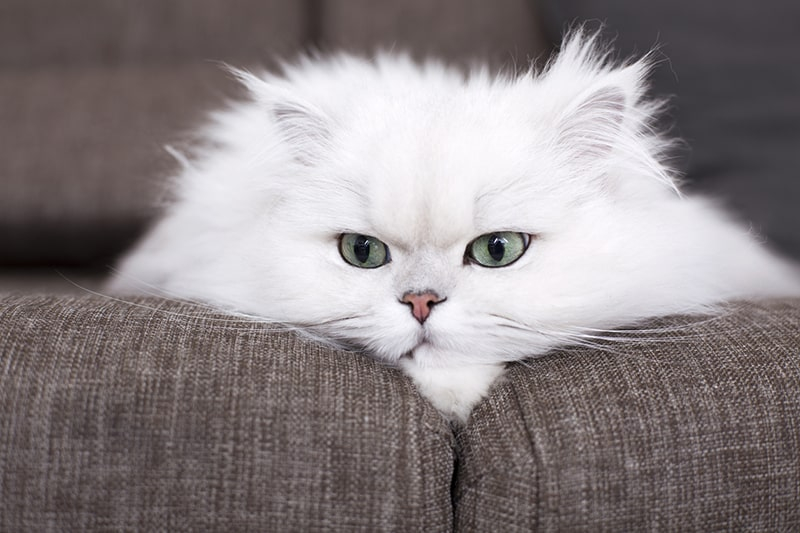
Photo: tthme.com 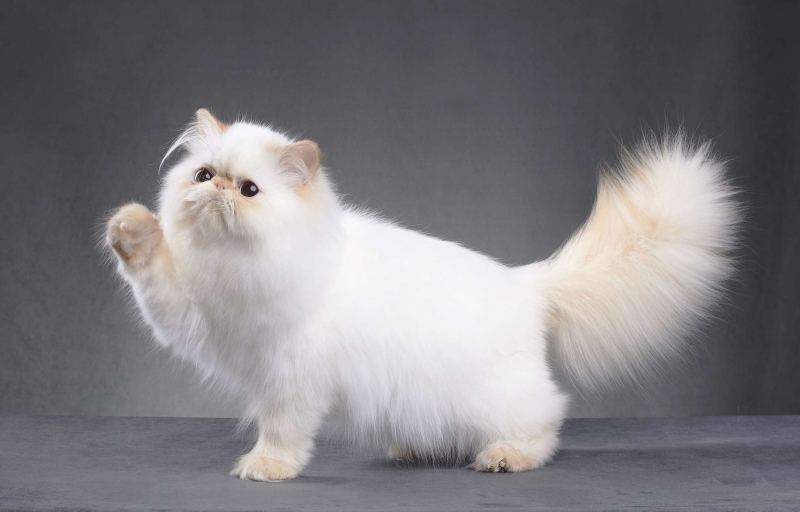
Photo: thesprucepets.com -
The next position on the list of the friendliest cat breeds in the world is the Sphynx cat breed, commonly referred to as the Canadian Sphynx, which is distinguished by its lack of fur. The Sphynx was created via selective breeding of cats, starting in the 1960s, who naturally have a genetic abnormality that causes them to lack hair.
Breed guidelines state that a cat's skin should have the delicate hairy texture of chamois leather, or it may be completely hairless. There may be whiskers, in whole or in pieces, or none at all. The cats have webbed feet and tall, thin heads. The Sphynx cat's skin is the same color as its hair, and it has all of the typical cat markings. Sphynx cats are warmer to the touch than coated cats because they lose body heat more quickly without fur, making them more likely to seek out warm environments.
Sphynx cats are renowned for their outgoing personality. They are highly active, intelligent, curious, and affectionate toward their owners. They are among the cat breeds that behave more like dogs, regularly greeting their owners at the door and being amiable around strangers.
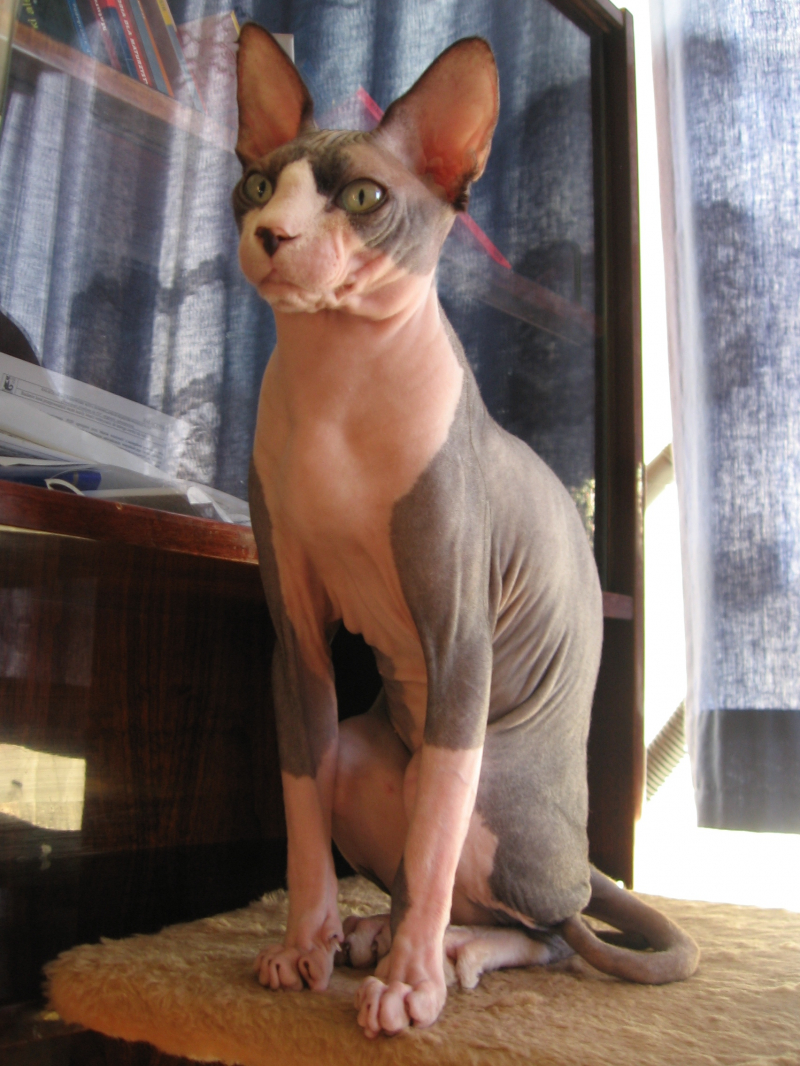
Photo: wikipedia.org 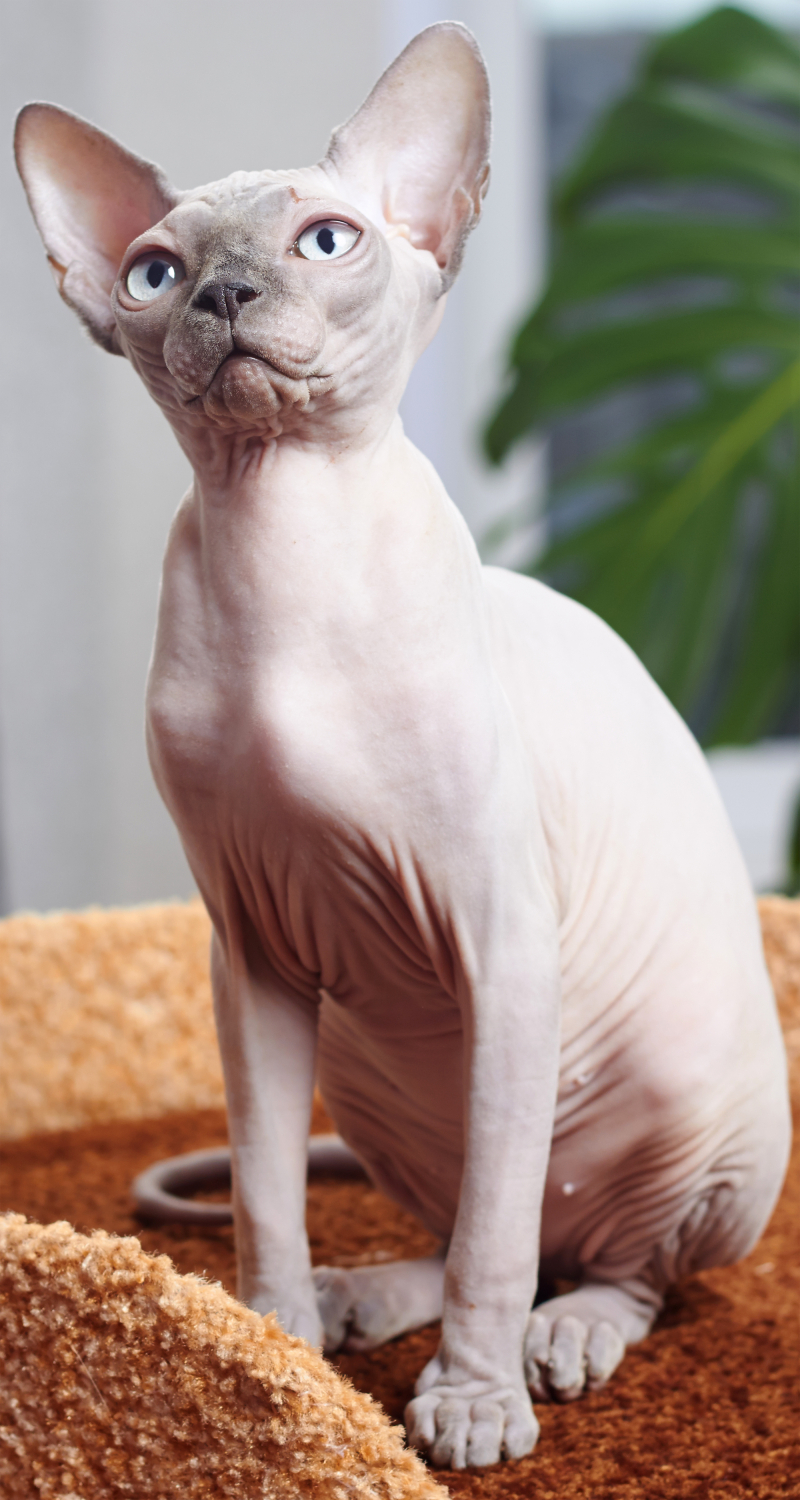
Photo: wikimedia commons -
The Burmese cat is a type of domestic cat that was produced in the United States and Britain but is said to have originated in Burma, maybe close to the Thai-Burma border. All Burmese cats were originally dark brown (sable), but they are now available in a broad range of colors, with varying levels of formal recognition for each. Both varieties of the breed are renowned for their characteristically outgoing, lively, and talkative temperaments.
Burmese is a breed that is known for being very people-oriented, and they continue to be lively and energetic as they age. They are claimed to build close ties with their owners and exhibit a number of blatantly puppy-like traits, such as a propensity to engage in human activity. The cats frequently pick up games like "fetch" and "tag." As with the similarly acting Abyssinians, the "dog-like attachment to the owners" of Burmese promotes an "increased need for human contacts," according to a study by veterinarian Joan O. Joshua. The mere "tolerant acceptance of human companionship" based on "comforts" that many other breeds exhibit contrasts with this.
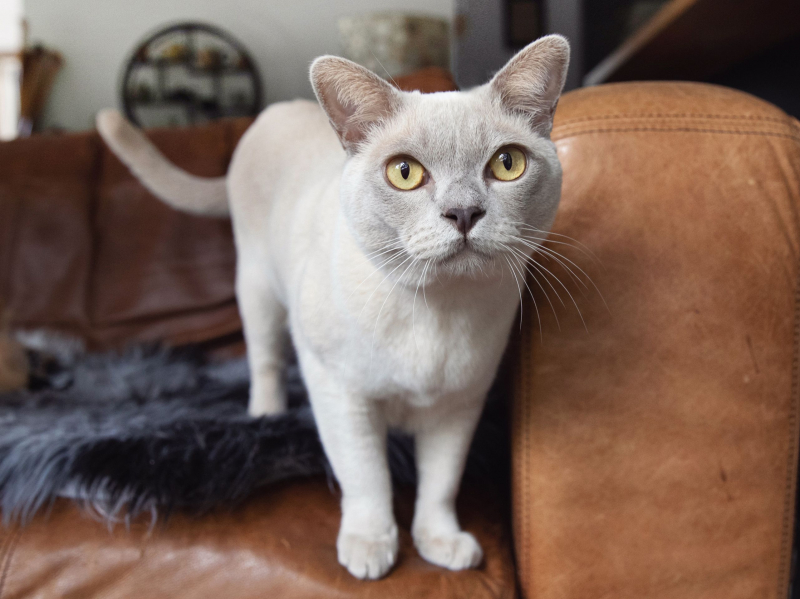
Photo: thesprucepets.com 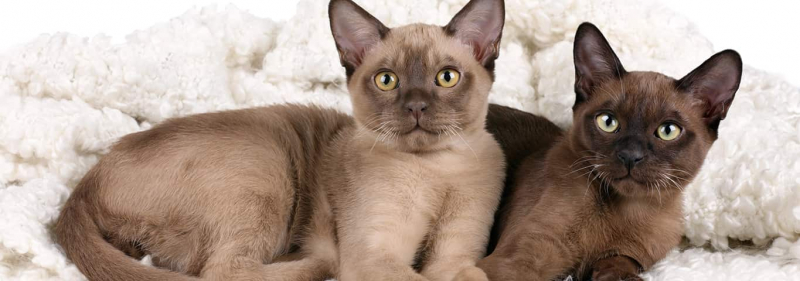
Photo: tthme.com -
One of the friendliest cat breeds in the world is the Ragdoll cat breed. It has blue eyes and a colorpoint coat. It has a semi-long, silky-soft coat, and a large, muscular morphology. In the 1960s, American breeder Ann Baker created the ragdoll. They are well renowned for their friendly disposition and docile, calm temperament. The term "Ragdoll" refers to individuals from the original breeding stock who have a propensity to become relaxed and limp when being picked up.
The upside-down V-shaped patterns on their forehead, wide round blue eyes, soft, thick coats, broad limbs, long tails, and soft bodies make ragdolls stand out as strong, large, and heavy cats. Most frequently, their color rings are tricolor or bicolor.
Ragdolls have a reputation for being extremely floppy and peaceful, and it has been suggested that these traits may have come from Persian and Birman ancestors. Whether this characteristic is the product of a genetic mutation or is merely an instinctual response to being carried up by their mother as kittens is a subject of debate. The idea that Ragdolls are pain-resistant has its origins in some people's excessive docility.
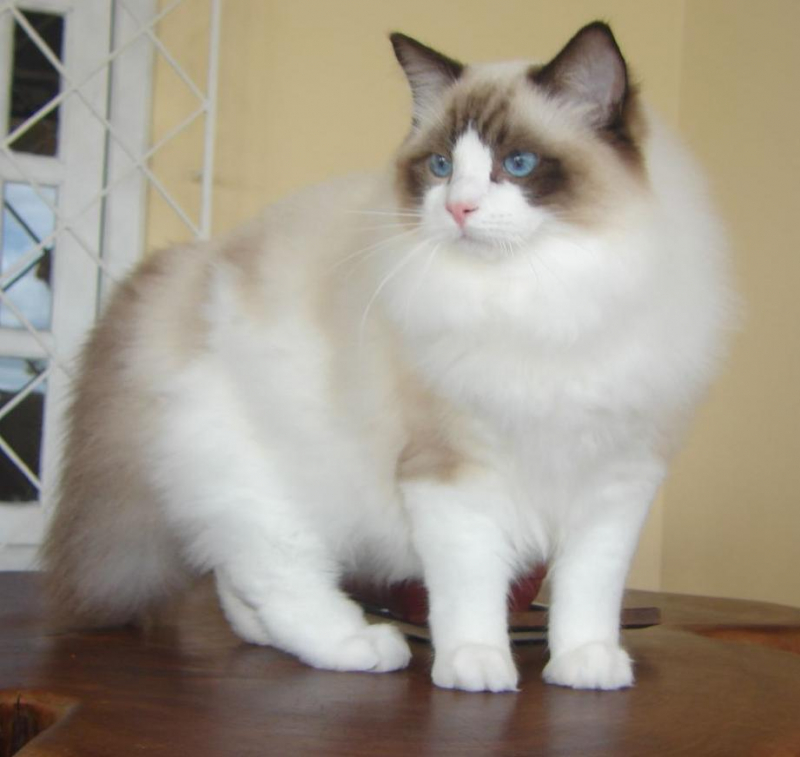
Photo: wikipedia 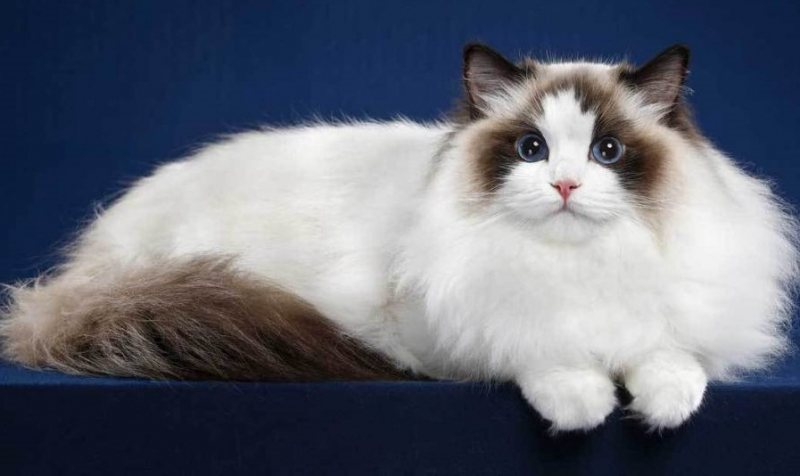
Photo: petto.vn -
One of the first Asian cats to be distinctly recognized is the Siamese cat. The original Siamese cat breed descended from the Wichianmat landrace, one of the numerous types of cats indigenous to Thailand, rose to prominence in Europe and North America in the 19th century. The modern-style Siamese is distinguished by its highly honed, more extreme features, huge ears, triangular head shape, elongated, thin, and muscular physique, and different point coloration patterns.
Siamese cats are known for their social nature and are often quite intelligent and friendly. Many people are referred to as "extroverts" because they like being around other people. They frequently form close bonds with just one individual. They are persistent in their demands for attention and have a characteristic miaow that has been compared to the cries of a human newborn. Even as adults, these cats are frequently described as having more dog-like behavior than other cats because of how active and playful they tend to be.
Due to their inclination to seek out humans or other cats, Siamese cats can experience depression or separation anxiety when left alone for extended periods of time. For this reason, Siamese cats are frequently purchased in pairs so that they can keep each other company.
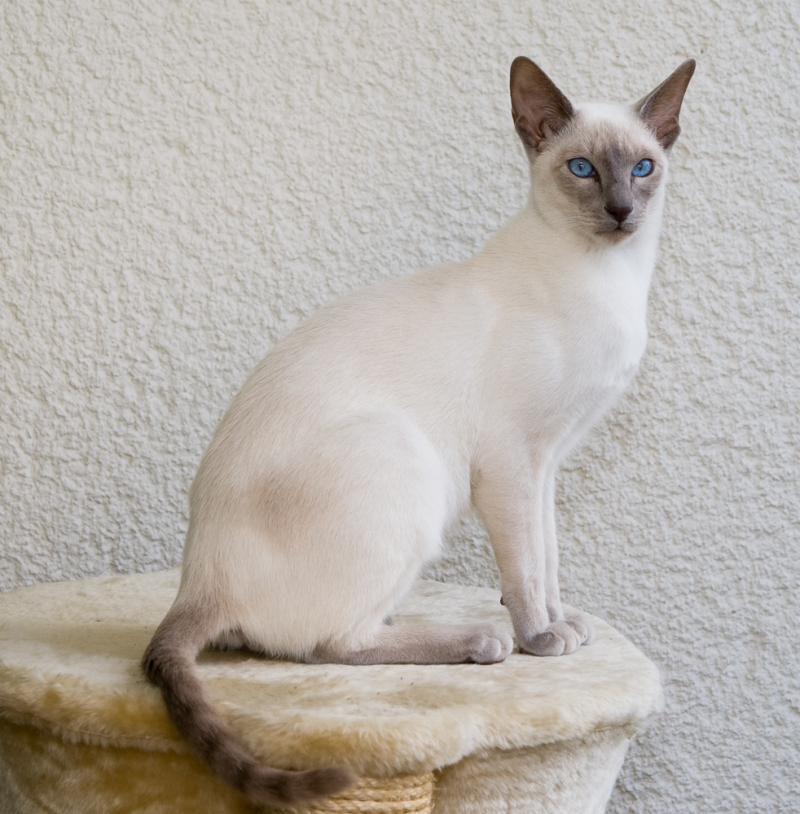
Photo: wikipedia.org 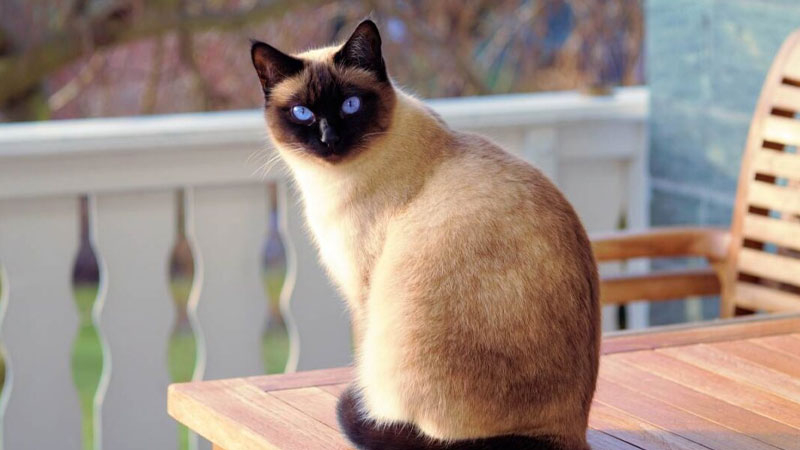
Photo: bachhoaxanh.com












